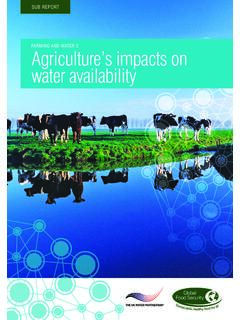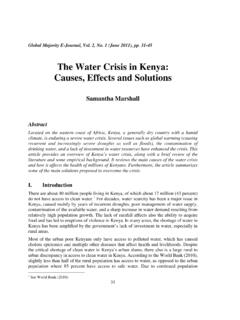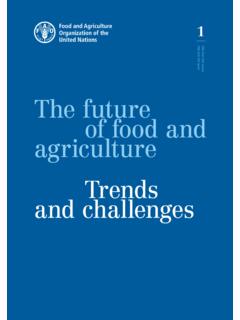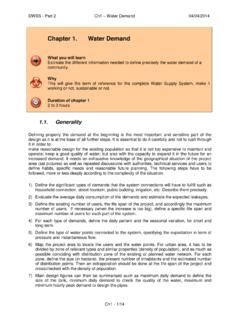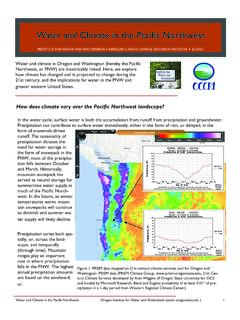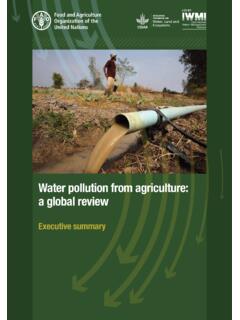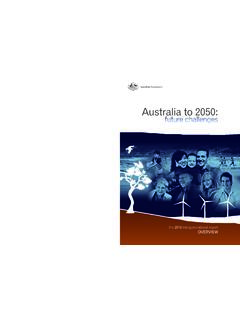Transcription of GLOBAL WATER CRISIS - UNU-INWEH
1 UNU-INWEHGLOBAL WATER CRISIS :THE FACTSUNU-INWEH is supported by the Government of Canada through GLOBAL Affairs Canada. United Nations University Institute for WATER , Environment and HealthAuthorship: Lisa Guppy and Kelsey AndersonContributing Authors: Mehta, P., Nagabhatla, N. and Qadir, Citation: Guppy, L., Anderson, K., 2017. WATER CRISIS Report. United Nations University Institute for WATER , Environment and Health, Hamilton, image: : Kelsey Anderson ( UNU-INWEH )Download at: : 978-92-808-6083-2 UNU-INWEHE xecutive SummaryWater is a foundation of life and livelihoods, and is key to sustainable development. Successful WATER manage-ment will serve as a foundation for the achievement of many ofthe 17 Sustainable Development Goals (SDGs), as well as for SDG 6 - which is to Ensure availability and sustainable management of WATER and sanitation for all.
2 Despite this, WATER is becoming a pressing societal and geopolitical issue in some regions, it is already of critical national concern. Business as usual will mean the world will miss WATER -related SDGs by a wide margin; up to 40% of the world s population will be living in seriously WATER -stressed areas by 2035; and the ability of ecosystems to provide fresh WATER supplies will become increasingly of fresh WATER comes from river basins that cross national borders. Transboundary WATER agreements need to be robust enough to deal with increasingly uncertain environmental and climatic conditions, and the social and demographic changes that will raise GLOBAL population to billion by 2050 and double the number of people who live in urban conceptualisations of WATER can and have led to conflict.
3 The perception of WATER as a human right and a common public and environmental good is often opposed by the view of WATER as a commodity that needs to be priced to ensure efficient and sustainable use. Not only nations but provinces and communities will need to align WATER perspectives to allow for peaceful and effective integrated WATER resource management and sustainable management will mean tackling neglected issues such as WATER wastage in current systems, which has been estimated to be up to 30%; common institutional dysfunction, unethical practices, poor accountability, and corruption in the WATER sectors of many report highlights looming WATER crises from 6 inter-related contexts: WATER scarcity and insecurity, WATER -related disasters, WATER , sanitation and health (WASH) CRISIS , WATER infrastructure deterioration and destruction, unsustainable development, and ecosystem agencies, governments and civil societies have made clear that radical new approaches to WATER are needed to reverse these sobering WATER trends.
4 Only by facing these crises in an intelligent and cohesive way will WATER continue to support life, development and biodiversity for our children and our future. 1 UNU-INWEHor more than 3 times the current level of capital investment is needed to achieve the Sustainable Development Goal 6 targets on WATER supply, sanitation and hygiene ( and ). The amount of money needed to meet the other targets of the WATER goal is currently $114 billion per milliondeaths112 millionpeople were affected by floods 2005-201540% gapbetween WATER demand and WATER available by 2030 30%of GLOBAL waterabstraction is lost through leakage80%or more wastewater returns to the environment without adequate treatmentwere attributable to the environment globally in 2012people now use a sourceof drinking WATER contaminated by billion2 UNU-INWEHW ater scarcity and insecurityThe notion that WATER is plentiful it covers 70% of the planet is false, as only of all WATER is freshwater.
5 This limited resource will need to support a projected population of billion in 2050; and by that date, an estimated billion or over 40% of the world s population - will live in severely WATER -stressed river basins .It is not just population that is pressuring WATER resources. Excessive use is also evident: the GLOBAL population tripled in the 20th century, but the use of WATER increased six-fold . Between now and 2050, WATER demands are expected to increase by 400% from manufacturing, and by 130% from household use .As WATER availability decreases, competition for access to this limited resource will increase. 60% of all surface fresh WATER comes from internationally shared river basins and there are an estimated 592 transboundary aquifers. Continuing cooperation and coordination between nations is crucial to ensuring WATER is available for human, economic and environmental needs.
6 Although hundreds of international WATER agreements have been signed over time , how countries will cooperatively manage growing resource pressures so that they do not lead to more conflicts over WATER is not often insecurity can be exacerbated by drought. More people are affected by drought than any other disaster type. In 2016, 411 million people in total were affected by disasters and 94% of those were drought affected . Droughts are also the costliest disasters, with significant impacts on agriculture in particular; droughts cause an average US$6 8 billion worth of losses in agriculture in the USA annually . In China, drought has resulted in an annual grain production loss of more than 27 million tons over the last two decades; and from the 1950s to the beginning of this century, the annual average crop area suffering from drought has expanded from million hectares to million hectares, an increase of 116%.
7 If WATER were secured for irrigated agriculture, the potential GLOBAL welfare gain for reduced risk in 2010 would have been US$94 billion. Findings also show that enhanced WATER security can help stabilise food crop production and prices. In a WATER secure scenario, the probability of GLOBAL wheat production falling below 650 million tons per year is reduced from 83% to 38% . There has been a drop in globally available fresh WATER per capita since 1960 55%By 2030, GLOBAL demand for WATER is expected to grow by 50% WATER scarcity currently affects more than 40% of the GLOBAL population By 2050, an additional billion people can be expected to be living in areas with severe waterstress, especially in North and South Africa and South and Central Asia Worldwide, the total cost of WATER insecurity to the GLOBAL economy is estimated at US$500 billion annually.
8 Including environmental impacts, this figure may rise to 1% of GLOBAL gross domestic product (GDP) Agriculture accounts for of all WATER withdrawals globally and for over in the majority of Least Developed Countries (LDCs).. and more food will be needed by 2050 WATER scarcity, exacerbated by climate change, could cost some regions up to 6% of their GDP The 5th assessment of the Intergovernmental Panel on Climate Change (IPCC) projects that for each degree of GLOBAL warming, approximately 7% of the GLOBAL population will be exposed to a decrease of renewable WATER resources of at least 20% 70%90%70% 40% gapbetween WATER demand and WATER available by 2030 3 UNU-INWEHW ater-related disasters It is vital to protect investments in WATER -related infrastructure from shocks and stresses.
9 In 2009, the World Bank estimated that by 2030, around half the Bank s WATER sector portfolio which was then US$ billion committed and US$ billion in pipeline would be at high to medium risk of exposure to climate change impacts . In addition, hydrologic hazards are leading to significant deaths, displacements and injuries. Up to 90% of all disasters are WATER -related, and over the last two decades, floods have been the most frequent GLOBAL natural disaster ; in 2016, 50% of all recorded events were related to flooding. The total value of all assets that are at risk from flooding by 2050 is predicted to be US$45 trillion: a rise of over 340% from 2010 .Between 1970 and 2010 the world s population increased by 87%, from billion to billion.
10 During the same period, the annual average population exposed to flood increased by 112% - from to million per year .By 2050, rising populations in flood-prone lands, climate change, deforestation, loss of wetlands and rising sea levels can be expected to increase the number of people vulnerable to flood disaster to 2 billion . The UN was prompted to release warnings about urban flash floods after hundreds died in Guatemala, the USA and southern France in 2015 stating that under a changing climate, intense rainfall and urbanisation have made these disasters more common in the last two decades . WATER -related ecosystems can mitigate WATER -related disasters. Every hectare of mangrove and coastal marsh is worth up to US$15,161 a year in disaster-related services , and coastal wetlands helped to avoid more than $625 million in damages from Hurricane Sandy in 2012.

